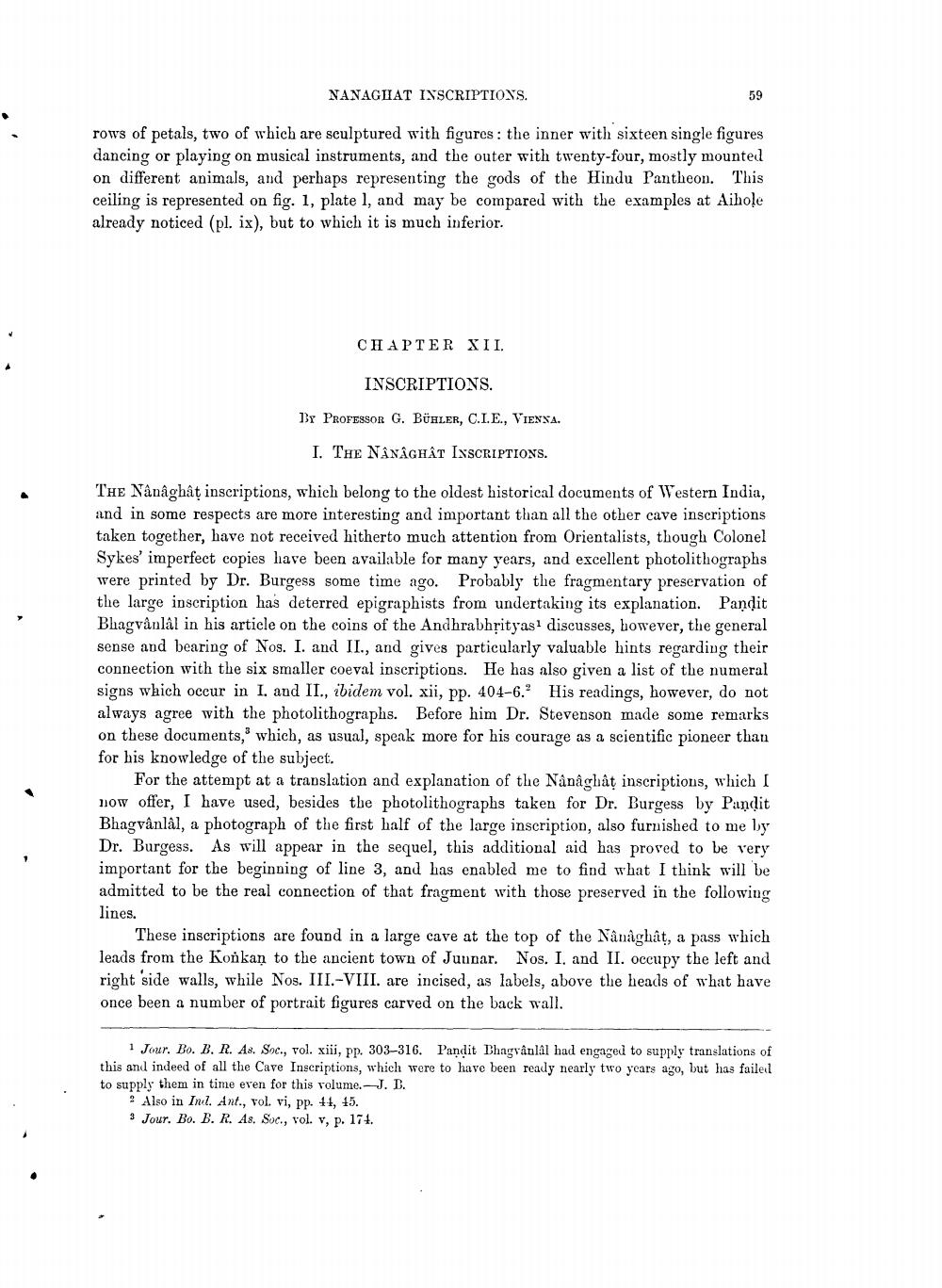________________
NANAGHIAT INSCRIPTIONS.
59
rows of petals, two of which are sculptured with figures: the inner with sixteen single figures dancing or playing on musical instruments, and the outer with twenty-four, mostly mounted on different animals, and perhaps representing the gods of the Hindu Pantheon. This ceiling is represented on fig. 1, plate 1, and may be compared with the examples at Aihole already noticed (pl. ix), but to which it is much inferior.
CHAPTER XII.
INSCRIPTIONS.
1x Professor G. BÜHLER, C.I.E., VIENNA.
I. THE NÂNÂGHẤT INSCRIPTIONS.
The Nânâghât inscriptions, which belong to the oldest historical documents of Western India, and in some respects are more interesting and important than all the other cave inscriptions taken together, have not received hitherto much attention from Orientalists, though Colonel Sykes' imperfect copies have been available for many years, and excellent photolithographs were printed by Dr. Burgess some time ago. Probably the fragmentary preservation of the large inscription has deterred epigraphists from undertaking its explanation. Pandit Bhagvânlål in his article on the coins of the Andhrabhrityas' discusses, however, the general sense and bearing of Nos. I. and II., and gives particularly valuable hints regarding their connection with the six smaller coeval inscriptions. He has also given a list of the numeral signs which occur in I. and II., ibidem vol. xii, pp. 404-6. His readings, however, do not always agree with the photolithographs. Before him Dr. Stevenson made some remarks on these documents, which, as usual, speak more for his courage as a scientific pioneer than for his knowledge of the subject.
For the attempt at a translation and explanation of the Nânâghât inscriptions, which I now offer, I have used, besides the photolithographs taken for Dr. Burgess by Pandit Bhagvânlal, a photograph of the first half of the large inscription, also furnished to me by Dr. Burgess. As will appear in the sequel, this additional aid has proved to be very important for the beginning of line 3, and has enabled me to find what I think will be admitted to be the real connection of that fragment with those preserved in the following lines.
These inscriptions are found in a large cave at the top of the Nânåghat, a pass which leads from the Konkan to the ancient town of Junnar. Nos. I. and II. occupy the left and right side walls, while Nos. III.-VIII. are incised, as labels, above the heads of what have once been a number of portrait figures carved on the back wall.
1 Jour. Bo. B. R. As. Soc., vol. xiii, pp. 303-316. Pandit Bhagvânlal had engaged to supply translations of this and indeed of all the Cave Inscriptions, which were to have been ready nearly two years ago, but has faileil to supply them in time even for this volume.-J. B.
? Also in Inl. Ant., vol. vi, pp. 14, 15. 3 Jour. Bo. B. R. As. Soc., vol. v, p. 174.




